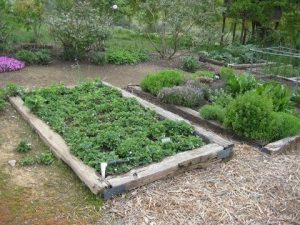“Never put off until tomorrow what you can do the day after tomorrow.” ~ Mark Twain. What a wise man – he totally understood procrastinators like me! My husband had a good chuckle when I told him I was the one writing this article. If you know the pressure that procrastination can cause, give yourself a break. As a gardener, sometimes it’s a good thing to do nothing. Hurray! Here are a few do’s and don’ts that will help you justify being a little lazy (at this time of year).
The no-no list:
- DON’T work the wet soil, especially clay. You’ve probably heard this warning before, but it is worth repeating. Compacting wet soil by digging, tilling, or even walking on it can harm the structure of the soil, which will only cause frustration later. Soil that is ready to be worked can be damp but not soggy or sticky.
- DON’T plant too early. You have probably heard this warning time and time again. Unfortunately, many folks still give in to the temptation to plant, then waste time and money when plants die due to a late spring frost.
- DON’T fertilize too early. Avoid high nitrogen fertilization until you are past the danger of frost. The new growth of many perennials and shrubs can be damaged by the cold (and deer will find those nice tender shoots). What’s more, the plant’s energy will be used to grow foliage instead of producing the blooms.
- DON’T prune too early. I know that many of us have a habit of grabbing our pruners and heading to the nearest bush that looks shaggy. Yet again, a late freeze may damage the plant. Of course the exceptions are roses and fruit trees. However, at any time of year you can cut branches that are broken, dead, or diseased.
- DON’T cut back bulb foliage. When your spring bulbs, like daffodils, are done blooming, deadhead the old blooms but leave the foliage. The leaves need the sun to create and store the energy for next year’s flowers. Take it easy and only whack those ugly leaves when they are clearly expired, or when you just can’t stand it anymore.
Yes – you can do these now:
- Improve your soil organically. The key to a healthy garden is healthy soil. That means avoiding synthetic fertilizers whenever possible so that all of those wonderful and much needed organisms living in your soil are happy. Using compost or mulch is a great way to improve your soil and prepare it for planting. Don’t work in amendment if it will disturb wet soil – just throw on a couple of layers of compost or mulch and let it eventually work its magic.
- Weed (then weed some more). Another reason to layer amendment without disturbing the soil is that tilling the soil exposes dormant weed seeds to sunlight. With no light, the weeds won’t be able to germinate. One way to prevent new weeds from sprouting is to use plenty of mulch. Use three or four inches of mulch – it can be store-bought mulch, landscape fabric, leaves gathered from your fall raking, or even hay. Then yank those young ones that survive before they get the best of you.
- Start battling starthistle weeds. If you’re one of the unfortunate people who battle obnoxious starthistle, regularly hand pull small infestations and throw them into the garbage can. Or put them in double black garbage bags and place the bags in the sun for six weeks to kill the plants. If you want to get more aggressive in controlling starthistle, the time to spray is from now through April.
- Sow seeds indoors – watching plants develop from seed can be very gratifying, but it takes patience and you have to follow the specific instructions on each seed packet. Again, don’t lose all of that time you invested in growing your seedlings by planting before the last frost. The exception is sowing seeds like the California Poppy. You probably won’t have to work the soil since they can usually tolerate tough conditions. Just sprinkle them around for a natural look.
- Test your soil. Get a soil pH test kit from your local nursery. It’s easy to test soil samples and doing this now gives you time to start amending the soil in order to obtain the proper pH by the time you are ready to plant. Focus on the areas where plants struggle the most.
I hope I’ve given you some good reasons for delaying certain chores guilt-free. In the words of comedian Ellen Degeneres, “Procrastinate now, don’t put it off!”
Kathy Nunes is a master gardener who loves to while away endless hours in her garden.
Sharing the Knowledge: Gardening in the Mother Lode by the Master Gardeners of Tuolumne County, is on sale for $25.00. You can purchase the book at the University of California Cooperative Extension, 52 N. Washington Street, Sonora (209-533-6992).


